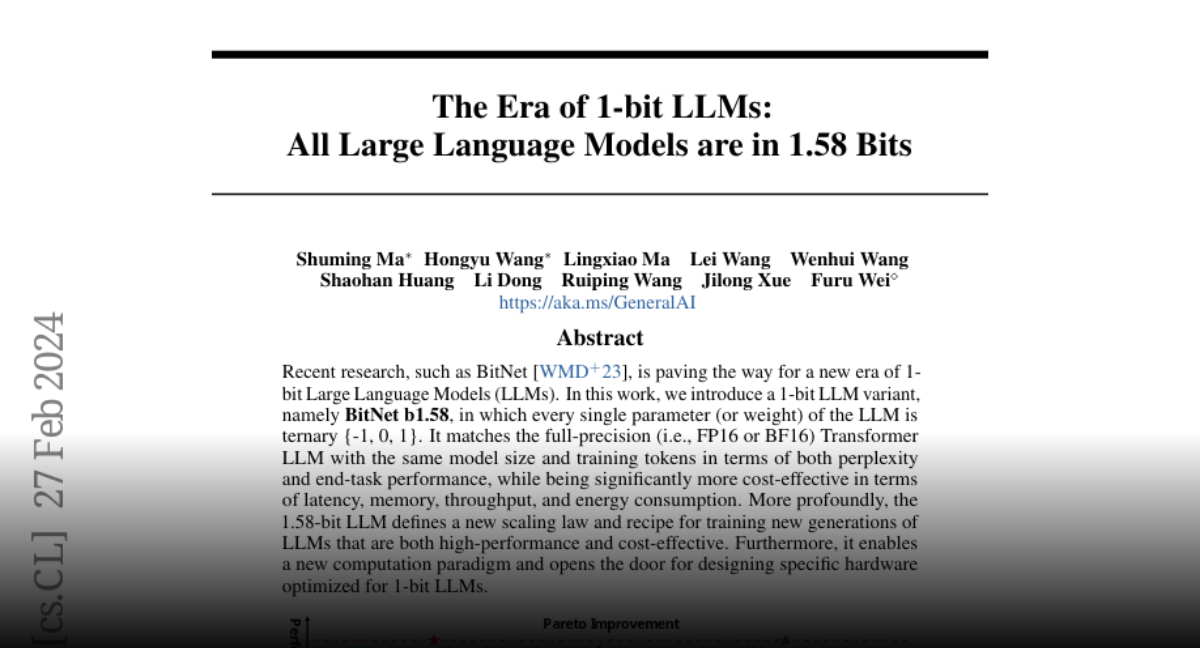From the abstract: “Recent research, such as BitNet, is paving the way for a new era of 1-bit Large Language Models (LLMs). In this work, we introduce a 1-bit LLM variant, namely BitNet b1.58, in which every single parameter (or weight) of the LLM is ternary {-1, 0, 1}.”
Would allow larger models with limited resources. However, this isn’t a quantization method you can convert models to after the fact, Seems models need to be trained from scratch this way, and to this point they only went as far as 3B parameters. The paper isn’t that long and seems they didn’t release the models. It builds on the BitNet paper from October 2023.
“the matrix multiplication of BitNet only involves integer addition, which saves orders of energy cost for LLMs.” (no floating point matrix multiplication necessary)
“1-bit LLMs have a much lower memory footprint from both a capacity and bandwidth standpoint”
Edit: Update: additional FAQ published



Hmm. I meant kind of both. I think them not releasing a model isn’t a good sign to begin with. That wouldn’t matter if somebody picked it up. (What I read from the paper is that they did some training up to 3B(?!) and then scaled that up in some way to get some more measurements without actually training larger models. So also internally they don’t seem to have any real larger models. But even the small models don’t seem to have been published. I mean I also don’t have any insight on what amount of GPUs the researchers/companies have sitting around or what they’re currently working on and using them for. It’s a considerable amount, though.)
It’s only been a few weeks. I couldn’t find a comprehensive test / follow-up of their approach yet. However last week they released some more information: https://github.com/microsoft/unilm/blob/master/bitnet/The-Era-of-1-bit-LLMs__Training_Tips_Code_FAQ.pdf
And I found this post from 2 days ago where someone did a small training run and published the loss curve.
And some people have started doing some implementations on Github. I’m not sure though where this is supposed to be going without availability of actual models.